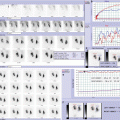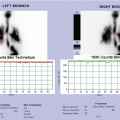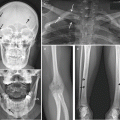© Springer International Publishing Switzerland 2017
Maria Carmen Garganese and Giovanni Francesco Livio D’Errico (eds.)Conventional Nuclear Medicine in Pediatrics10.1007/978-3-319-43181-9_1111. Oncology
Luciana Vinti1, Angela Mastronuzzi1 , Giuseppe Maria Milano1, Evelina Miele1, Raffaele Cozza1 and Franco Locatelli1
(1)
Pediatric Hematology and Oncology Department, “Bambino Gesù” Children Hospital, Rome, Italy
11.1 Introduction
Although childhood cancer is rare, it is the second most common cause of death among children in Western countries, after accidents. Global incidence rate shows that there are 140–150 new cases for every million children aged 0–16. Childhood cancer rates have been rising slightly for the past few decades; increase in incidence has been attributed in part to improvements in diagnosis and changes in reporting patterns.
Thanks to investment in pediatric oncology, overall outlook for childhood cancer has improved greatly over the past 50 years. It is estimated that 65 % of children diagnosed with cancer can be successfully treated, so there is approximately 1 survivor of childhood cancer among 800–900 adults. Long-term survivors need follow-up care for the rest of their lives because of the risk of late effects (such as anthracycline-induced cardiotoxicity, higher breast cancer rates in women treated for Hodgkin’s lymphoma with chest irradiation) that may occur many years after they complete treatment for cancer. This is the reason why a program that provides survivors of childhood cancer with lifelong health surveillance has to be planned and realized.
11.1.1 Acute Lymphoblastic Leukemia
Acute lymphoblastic leukemia (ALL) is the most common childhood cancer (accounting for 35 % of pediatric malignancies with 30–40 new cases for every million children aged 0–16) and represents a prototype of improvements in treatment and remarkable gains in survival. ALL accounts for about 80 % of leukemias and occurs at all ages, but the peak incidence is between 2 and 6 years of age.
11.1.2 Non-Hodgkin’s Lymphoma
Malignant lymphomas account for approximately 10 % of childhood cancers: in industrialized countries, they are the third most common neoplastic disease according to incidence rates. Lymphoma is a general term for a histologically heterogeneous group of neoplasms characterized by clonal proliferation of immunologically active cells (B, T, and NK lymphocytes). They are used to be divided into (HLs) and non-Hodgkin’s lymphomas (NHLs).
NHL represents the most common lymphomatous neoplasm in children aged under 10 years, while HLs occur more frequently in adolescents. There are eight new cases of NHLs for every million children, and the peak incidence is between 7 and 10 years of age (extremely rare under 2 years).
Etiology of NHL remains unknown. Epstein Barr virus is associated with Burkitt lymphoma in equatorial Africa, but is observed only in 15 % of patients in Western countries. Unlike leukemias, NHLs arise from lymphoid tissues such as spleen, thymus, lymph nodes, and mucosa-associated lymphoid tissue (MALT). When neoplastic cells spread to the bone marrow (more than 25 %), malignant lymphoma turns into a leukemia.
Classification system for NHLs is very complex, but pediatric subtypes are basically four: Burkitt’s lymphoma (T or B), lymphoblastic lymphoma, anaplastic large cells lymphoma (ALCL), and diffuse large B-cells lymphoma (DLBCL). Pediatric NHLs are highly aggressive with fast growing and dissemination, especially to extranodal sites.
Histological diagnosis of lymphoma is always required, and thus a biopsy is essential for the proper framing of the disease. Once NHL is diagnosed, tests are performed to determine the stage: whole body computer tomography (CT) scan can analyze primary site and any disseminations, while bone scintigraphy may reveal metastatic bone lesions. FDG-PET/CT scan detects metabolic activity both in primary localization and metastasis.
NHL staging system according to St Jude Children’s Research Hospital criteria:
Stage I: NHL is limited to one lymph node group (e.g., neck, underarm, groin, etc.) or tumor outside of the abdomen or mediastinum (middle chest)
Stage II: NHL is limited to one tumor with local lymph node involvement, or NHL is limited to two or more tumors or lymph node groups on the same side of the diaphragm, or NHL is limited to a primary tumor of the gastrointestinal tract with/without involvement of the local lymph nodes.
Stage III: NHL includes tumors or lymph node groups on both sides of the diaphragm, or any primary NHL tumor within the thorax (trunk) or extensive NHL within the abdomen, or any NHL around the spine or the outermost membrane of the brain and spinal cord (dura mater).
Stage IV: NHL is in the bone marrow or central nervous system (CNS), with/without other sites of involvement. Bone marrow NHL is defined as 5 % malignant cells in an otherwise normal bone marrow with normal blood counts and smears. By contrast, lymphoblastic lymphoma that produces more than 25 % malignant cells in the bone marrow is defined as leukemia.
Stay updated, free articles. Join our Telegram channel

Full access? Get Clinical Tree








